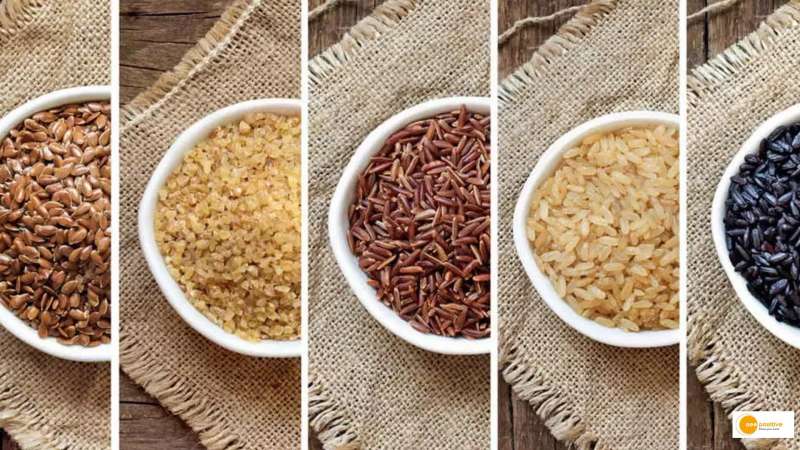

Introduction
The Indian economy is largely based on agriculture in addition to trade and commerce. Agricultural products are India’s key exports and this has been prevalent for several decades. One of the key agricultural products that had been previously ignored was the production of millet in India. But now, the scenario has changed. With the spread of new ideas, knowledge, and technology, people have understood the importance of millet. Therefore, in recent days, the Government has largely focused on the exports of millet and also on millet production in India. People in recent days are shifting their preferences to the consumption of millet as a part of their diet. The most important step that the Government of India is by launching a campaign that aims to produce millet in large quantities and use it for consumption as well as for export.
India’s New Millet Campaign
India has globally relaunched a brand that had failed earlier. This brand is specially dedicated to the agricultural product: ‘Millet’. Also called mota anaj or big grain, millet had been looked down upon as a coarse grain previously while during that time, wheat and rice have constantly occupied a place that is their pride: ‘the fine grains’. The Parliament had recently discussed a campaign that would make millet a global brand and this also got a push from the United Nations which accepted India’s proposal that it would declare 2023 as the International Year of Millets. Since then, millets have been gaining attraction among health-conscious societies in India and abroad who prefer millet pancakes and cookies.
The rebranding of this grain began with its name. Millet is no longer regarded as mota anaj. Instead, it is called the shree anna or Nutri cereal, a superfood that is rich in iron and calcium. This resilient grain also fits in well with the current global climatic concerns as it consumes very little water to grow and also has a low carbon footprint. It also grows in arid conditions. Sixteen major varieties of millet are cultivated in India among which three varieties dominate. This includes sorghum (jowar), pearl millet (bajra), and finger millet (ragi). Other varieties include minor millets (kangani), proso millet (cheena), kodo millet, barnyard millet (sawa/sanwa/jhangora), and little millet (kutki).
Millet was previously ignored by India’s Green revolution of the 1960s and 1970s. This cereal started receiving some vital attention only in 2012 when the Government crafted a policy called the Initiative for Nutritional Security through Intensive Millet Production (INSIMP). In 2018, millet was declared a “Nutri cereal” and was added to the national food security mission.
The Healthy Sign
Private entrepreneurs and various chains of hotels are working to meet the demand for millet. The ITC Hotel chains have included millet-based dishes in their buffets — from ‘risotto’, ‘jowar kebab’, and ‘jowar tur dal tadka’ to ‘kutki khao suey’ and so on. The Taj Mahal Palace in Mumbai provides various kinds of millets for risotto, tehri, and khichdi. The executive chef of the hotel, Amit Chowdhury, says that they have developed a buffet concept for the millets that are served in their banquet events. He also says that they have also introduced millet stations where various dishes are displayed and that most millets are gluten-free and are suited for making phulkas and cookies.
Anurag Katriar, the CEO of deGustibus Hospitality, says that his restaurant Indigo Deli had started a breakfast menu with foxtail millet upma and ragi pancakes. He also says that those dishes are both nutritious and extremely delicious. There is a growing demand for millets in the upmarket restaurants of the world which is considered to be a healthy sign.
Sharmila Oswal, a Pune-based Indian, who calls herself a millet-preneur, is a co-founder of Basillia Organics. In the last two years, the company has exported millets to the United Arab Emirates (UAE), the US, the Netherlands, and Australia. Her company’s products include millet noodles, millet cookies, millet namkeen, and so on. She nudges the parents to pack millet lunch boxes for their children. She says that the consumers are willing to pay a little more because millets are extremely nutritious. She also says that once the production grows, the prices are expected to come down.
The top five countries that are importing millet from India are UAE, Saudi Arabia, Nepal, the US, and Japan. India is trying to pull out all the hazards that prevent the creation of a new global millet order. It needs to address a few problems initially. One is the low shelf life of value-added millet products. Secondly, there are no separate Harmonized System codes that are an internationally standardized numerical method to classify traded products, especially for millets. APEDA has sent a request to the Director General of Foreign Trade, who in turn has taken up this issue with the Finance Ministry.
Conclusion
The campaign launched by the Government is a good measure that will lead to India being the global supplier of millet. This will ensure the inflow of foreign wealth into the country. This also aims at making India the leading producer of millet in the world. All these will ensure the smooth development of India even in the future.


